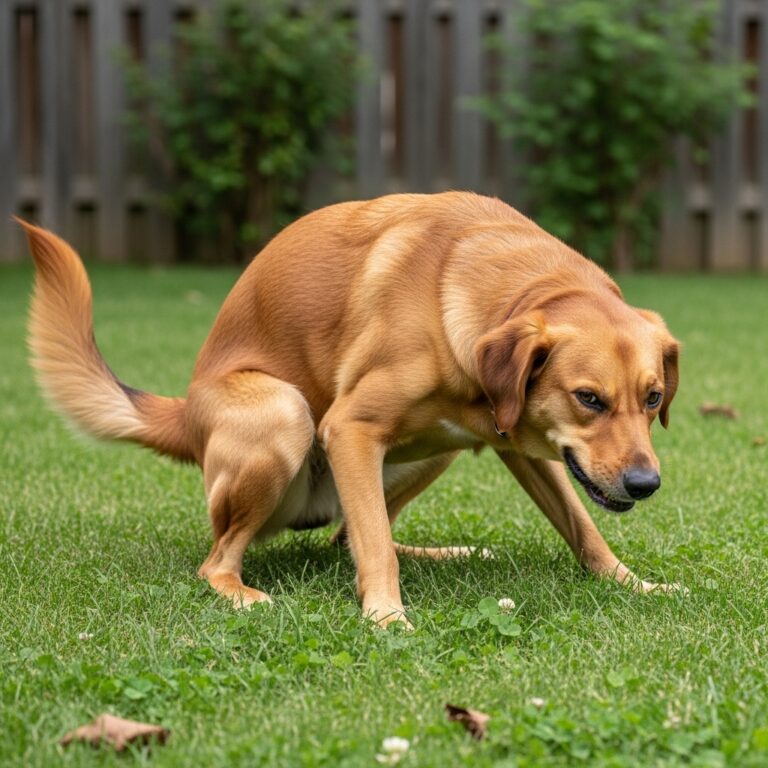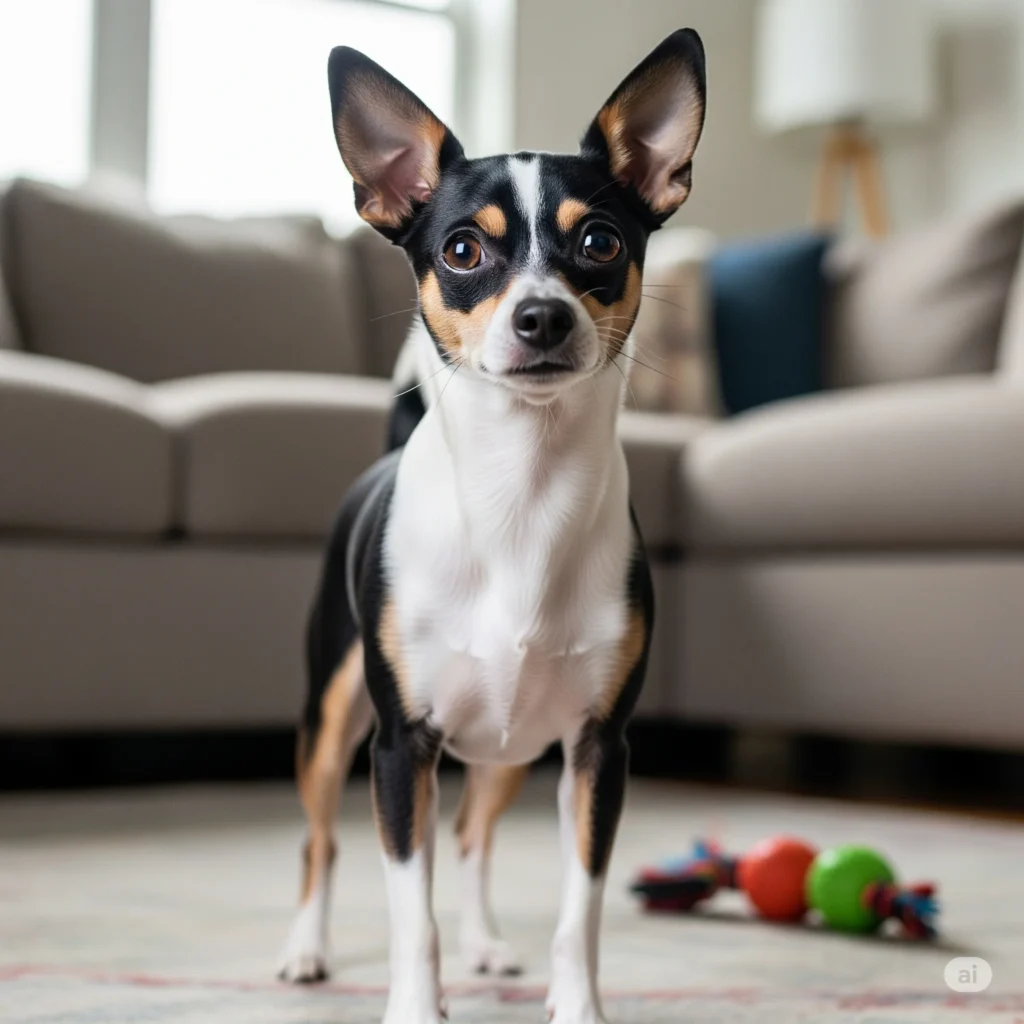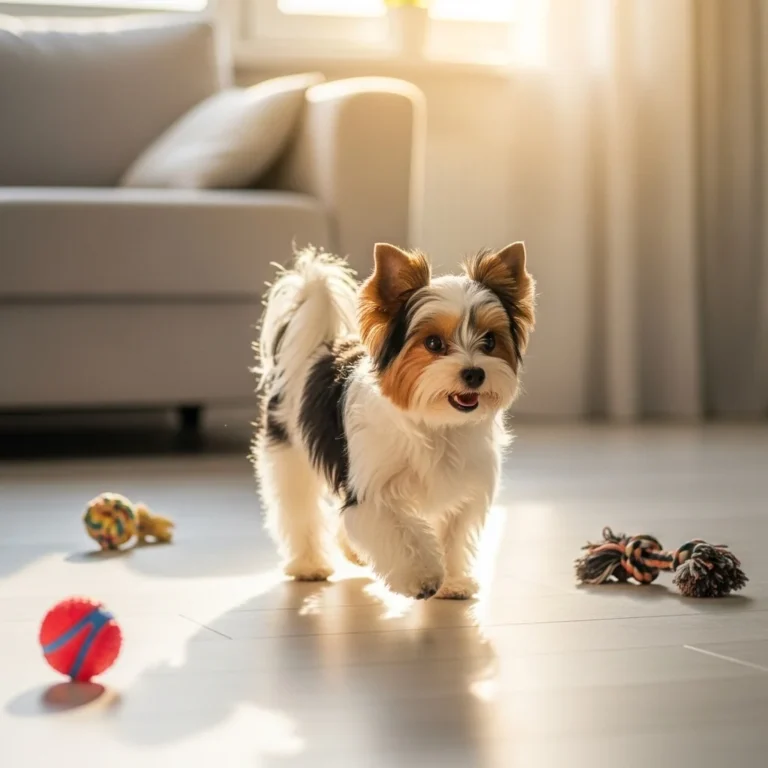
dyschezia in dogs
Every dog parent knows that our furry friends’ bathroom habits can tell us a lot about their health. But what happens when your dog suddenly starts straining, whining, or even crying while trying to poop? It’s heartbreaking to watch — and it might be a sign of dyschezia in dogs, a condition that often flies under the radar until it becomes quite uncomfortable for your pup.
When I first noticed my senior Labrador, Daisy, struggling to go, I assumed it was simple constipation. But after a quick vet visit, I learned that dyschezia isn’t just about being “backed up.” It’s actually a sign of pain or difficulty during defecation — and it can point to deeper issues in the rectum, spine, or even the nerves controlling the bowel.
Let’s unpack what dyschezia means, what causes it, how to spot it early, and most importantly — what you can do to help your dog feel better.
I. Understanding Dyschezia
What is dyschezia in dogs?
Dyschezia refers to painful or difficult defecation, where a dog strains, cries, or seems uncomfortable when trying to pass stool. According to Dr. Jennifer Coates, DVM, from PetMD, dyschezia often indicates irritation or disease in the rectum or anus rather than the intestines themselves. It’s not just “constipation” — it’s discomfort that comes from somewhere deeper.
While constipation involves hard or dry stool, dyschezia focuses more on the act of passing stool being painful. The stool may even be normal in texture but still hard to push out because of pain or blockage.(source)
How does dyschezia differ from constipation or tenesmus?
Constipation means your dog can’t pass stool easily due to it being dry or impacted. Tenesmus, on the other hand, is the constant urge to defecate, often producing little or no stool. Dyschezia can overlap with both but stands apart because pain is the defining factor.
Veterinary surgeon Dr. Patrick Mahaney explains on VCA Hospitals that dyschezia may occur even when stool consistency is normal — the discomfort stems from anal gland inflammation, rectal swelling, or nerve dysfunction.(source)
Is dyschezia a serious condition for dogs?
It can be. While mild cases sometimes resolve with dietary support or stool softeners, chronic dyschezia might indicate tumors, rectal polyps, or spinal nerve problems. Ignoring it can lead to worsening pain, rectal prolapse, or secondary infections.
If your dog cries, scoots, or avoids pooping altogether, don’t wait. Early vet attention makes a huge difference.(source , source)
II. Causes of Dyschezia
What are the most common causes of dyschezia in dogs?
Dyschezia can have a surprising variety of triggers. The most common causes include:
- Anal gland infections or impaction
- Rectal or anal tumors
- Prostatic enlargement (in male dogs)
- Pelvic injuries
- Spinal or neurological conditions
- Inflammatory bowel disease (IBD)
- Foreign bodies stuck in the colon or rectum(source)
Can dietary changes or poor nutrition cause dyschezia?
Absolutely. A sudden shift in diet or lack of fiber can cause stool irregularities that make pooping painful. Dr. Carol Osborne, DVM, notes on Veterinarians.org that feeding low-fiber diets or frequent high-fat treats can alter stool consistency, straining the rectal area.
Consistency is key — when switching foods, do it gradually over 5–7 days, and ensure your dog always has access to clean water.(source)
Related : Bland Diet for Dogs with Diarrhea or Colitis & pancreatitis
Are anal gland issues a common cause of painful defecation?
Yes — this is one of the most common culprits. Anal gland impaction can make pooping feel like squeezing a bruise. Dogs with this issue may scoot, lick their rear excessively, or cry out when defecating.(source)
Regular anal gland expression (either by a vet or trained groomer) can prevent buildup. You can also learn more about dog anal gland health here.
Can tumors, rectal masses, or growths lead to dyschezia?
Unfortunately, yes. Growths in the rectal wall or around the anus can narrow the passage and cause pain during stool passage. Tumors can be benign or malignant, so a vet’s physical and imaging exams are crucial for accurate diagnosis.(source)
How do neurological or spinal problems contribute to dyschezia?
If your dog has suffered spinal trauma or nerve compression, the signals that control bowel movement may be impaired. According to Dr. Debra Primovic of PetPlace, dogs with lower spinal injuries may lose coordination of the muscles used to defecate, leading to painful or incomplete movements.
Can inflammatory bowel disease (IBD) or infections cause dyschezia?
Yes — chronic inflammation from IBD, colitis, or infections can irritate the rectal lining, leading to straining or pain. If your dog also has diarrhea, mucus, or bloody stool, IBD may be a factor.(source)
Related: Dog Diarrhea: Causes, Fixes, & When to Worry
Are foreign bodies or trauma possible reasons for dyschezia?
Definitely. Swallowing bones, sticks, or toys that get stuck in the rectum can cause both obstruction and irritation. Trauma (like a fall or car accident) can also alter pelvic alignment, making defecation painful.(source)
III. Recognizing the Signs
What are the key signs of dyschezia in dogs?
- Straining or squatting for a long time(source)
- Whining, yelping, or crying during defecation(source)
- Scooting or licking the anal area(source)
- Blood or mucus in the stool(source)
- Reluctance to defecate or go outside(source)
- Visible pain when sitting down
How can I tell if my dog is straining or in pain while defecating?
Watch your dog’s posture — trembling, whining, or repeated attempts to go without success are strong indicators. If your dog looks back at their rear while trying to poop or suddenly stops mid-squat, that’s also a red flag.(source)
Why does my dog yelp or cry when trying to poop?
Pain during defecation can come from inflammation, infection, or obstruction. It’s not just discomfort; it’s your dog’s way of saying something’s wrong. Never ignore this sign — schedule a vet visit promptly.(source)
What does dyschezia look like in puppies or senior dogs?
In puppies, dyschezia often stems from dietary issues, worms, or congenital defects. In seniors, it’s more commonly linked to arthritis, nerve damage, or tumors pressing on the rectal area.
Can dyschezia cause blood or mucus in the stool?
Yes. Irritation or tearing of the rectal lining can lead to streaks of blood or mucus. Persistent bleeding needs immediate veterinary attention, as it may point to infection or cancer.(source)
IV. Diagnosis and Veterinary Care
When should I take my dog to the vet for dyschezia?
If straining lasts more than a day, or if your dog cries in pain, refuses food, or shows blood in the stool — call your vet immediately. Waiting too long risks complications.(source)
How do veterinarians diagnose dyschezia?
Vets start with a physical and rectal exam, feeling for swelling, foreign bodies, or masses. They may also recommend imaging tests to see deeper inside the pelvis.(source, source)
What diagnostic tests might be performed (X-rays, rectal exam, ultrasound, fecal analysis)?
- X-rays or ultrasound: detect obstructions or tumors.
- Fecal tests: identify parasites or infections.
- Rectal exam: assess swelling, pain, or foreign objects.
- Blood tests: rule out systemic conditions like infection or endocrine issues.
(source, source, source)
Could dyschezia be mistaken for a urinary or other gastrointestinal problem?
Absolutely. Dyschezia can mimic urinary blockage or severe constipation. That’s why professional evaluation is essential — home guessing can delay proper treatment.
related: uti in dogs: Signs, Fixes, Tips
V. Treatment Options
How is dyschezia treated in dogs?
Treatment depends on the cause. Vets may recommend:
- Dietary adjustments (adding fiber or moisture)
- Pain relief and anti-inflammatory meds
- Stool softeners or laxatives
- Antibiotics for infections
- Surgical removal of masses if present
(source)
What medications do vets use to relieve painful defecation?
Common options include lactulose (a stool softener), metronidazole (for infection or inflammation), and prednisone for inflammatory bowel conditions. Pain control is key — your vet might prescribe safe NSAIDs if inflammation is severe.(source)
When is surgery required to treat dyschezia?
If tumors, anal sac abscesses, or strictures are involved, surgery may be necessary. Don’t worry — most dogs recover quickly with proper post-op care and a high-fiber diet afterward.(source)
Are there safe home remedies or dietary adjustments that can help manage dyschezia?
Mild cases often respond to small changes:
- Add canned pumpkin or psyllium husk for fiber.
- Increase hydration by mixing water or broth into food.
- Encourage gentle walks to stimulate movement.
Read more practical tips on helping constipated dogs naturally.
What should I avoid doing when trying to help a constipated or straining dog?
Never use human laxatives, suppositories, or enemas — these can be toxic or cause injury. Also avoid ignoring the issue or delaying vet care if pain persists.
VI. Management and Prevention
How can I prevent dyschezia in my dog?
Prevention starts with consistent care — balanced diet, regular exercise, and vet checkups. Make sure your dog’s stool stays soft and easy to pass.(source)
What dietary changes or supplements support healthy bowel movements?
Fiber-rich foods like pumpkin, oats, and green beans can help. Some vets recommend omega-3 supplements for reducing inflammation and improving gut health.(source)
How important is hydration and exercise in preventing dyschezia?
Very! Hydration keeps stool soft, while movement stimulates bowel contractions. Lack of activity is a hidden risk factor, especially in older or sedentary dogs.
Can regular anal gland expression or vet checkups reduce the risk?
Yes. Routine anal gland maintenance and annual vet visits can catch early signs of dyschezia or related issues before they escalate.(source)
What are effective long-term management strategies for chronic dyschezia?
- Regular vet checkups
- High-fiber, easily digestible diet
- Consistent hydration
- Avoiding bones or indigestible treats
- Monitoring for recurrence of symptoms
source
VII. Related Concerns & Prognosis
What complications can arise from untreated dyschezia?
Ignoring dyschezia can lead to fecal impaction, rectal prolapse, or even infection. In chronic cases, pressure from straining can damage the colon and anus permanently.(source, source)
What is the recovery outlook or prognosis for dogs with dyschezia?
With early detection and proper treatment, most dogs recover completely. Even chronic cases can be managed successfully with the right care plan.
Can dyschezia lead to other digestive or systemic health problems?
Yes — ongoing strain affects the entire GI system, potentially triggering appetite loss, vomiting, or lethargy. If left untreated, it can even lead to nerve or muscle damage.
Related: Why Is My Dog Vomiting White Foam? Causes, treatment
After treatment, how soon should my dog’s bowel habits return to normal?
Most dogs improve within a few days to a week, depending on the underlying cause. However, ongoing monitoring is important — any relapse should be discussed with your vet.
Final Thoughts
Dyschezia in dogs can be distressing, but with early intervention, gentle care, and good nutrition, your pup can get back to their happy tail-wagging self in no time. Keep an eye on bathroom habits, and never hesitate to reach out to your vet if something seems off — your dog’s comfort and health are always worth it.
For more helpful canine health guides, visit DogsBlogss.com — your go-to hub for everything dog wellness and care.
please leave comment
you may like it






